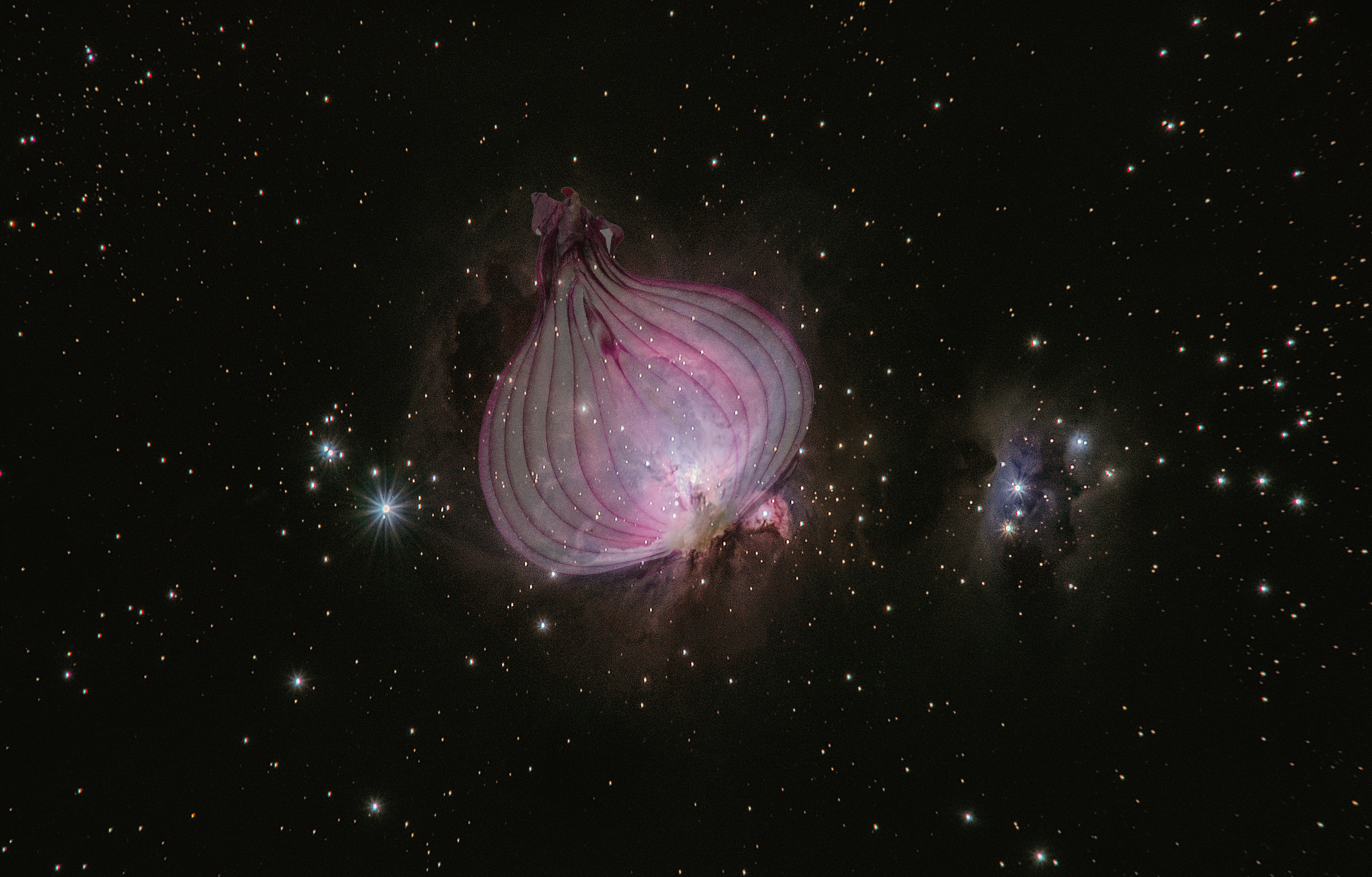
by Carol S. Hyman
Outer space has always fascinated human beings. The Webb Telescope, which recently went into orbit a million miles from the minds that conceived and executed its launch, lets us see energy dancing in space so distant we can’t measure it in miles. We have to resort to light years. More than thirteen billion of them.
The telescope is sending back data that, to be discernible by our five senses, has to be processed by computers. Once it is, the pictures are mind boggling. And the sounds scientists have fabricated from information emitted by a black hole are positively eerie. It’s spectacular and a bit discomfiting. What’s going on out there?
Here on Earth, if we can find a place unpolluted by artificial light on a clear night, and even without technology extending our senses, we may feel humbled by the sky’s unimaginable vastness. And the stellar plenitude we see is only a tiny fraction of the nebulous activity out of which our little blue orb with its conditions so well suited for life emerged. Pondering such vast emptiness can be slightly terrifying, almost inconceivable. And concepts are how we create the reference points we use to get and keep a grip on life. Lost in space is fine in theory but most of us are more comfortable on firm ground.
Though maybe less so these days, if we’re paying attention to what our activities are doing to the planet. It’s not that we mean to cause harm. Well, okay, maybe some do, some of the time. And probably all of us have, at times, out of not foreseeing consequences, out of going along with the status quo, out of thinking it’s cool to be careless. We just like to arrange the environment for our comfort and convenience. Up to this point, humanity has been acting pretty much like children who take for granted that Mother Earth will just keep on giving.
It’s time to grow up. That’s not just a good idea, it’s an evolutionary imperative. To do it we’ll have to incorporate what science has discovered about the nature of reality into how we live. The seemingly solid and separate elements of the physical world are, like the galaxies, also mostly space—or perhaps more accurately, energy dancing in space. We believe in the boundaries we project, but nothing, including ourselves, is nearly as solid as we might think. And we can have direct experience of this, of the dynamic fluidity around and within us. But to do that we have to train our minds and our hearts.
Space is indeed the final frontier, but the space we need to explore is inner space. If we want to help Mother Earth sustain life on the planet and create decent conditions for all species to survive and flourish, we have to extend beyond our five senses, much as we did with the Webb and the Hubble telescopes. But instead of doing it by building something external, we’ll do it by activating inner resources.
A quick search using another bit of brilliant technology tells me that the Webb telescope cost ten billion dollars. The price of extending our senses to explore inner space won’t be measured in money. Instead, developing the faculties to explore inner space will call for discipline and willingness to do hard work. We will have to shift our perspectives, individually and collectively, by paying attention, the currency human beings have to spend in time.
Time is an interesting resource. On one hand, it’s non-renewable; once it’s gone, there’s no getting it back. But time also rolls around fresh every moment. And time is what it will take. Our own time as individuals. Up close and personal. We have to inquire within. If we do, we can cultivate senses beyond the five we know. We can learn to discern the deeper insights that can emerge from our relationship with the environment in which we find ourselves in this particular time and space.
Pictures from the telescopes let us see what happened in the universe’s earliest days. If, that is, the early universe had days. Because what could a day possibly mean in a nebulous cosmos? And what does a day mean to us? Time doesn’t exist without reference points, like the time it takes a planet to rotate around a star. In outer space those are hard to pin down, while in our daily lives, relying on calendars and devices fosters the illusion that time marches on in regular progression, at least in the world around us. Our inner experience, if we pay attention, belies that.
For example, days (and nights) can seem endless, when our children are small, yet before we know it they’re grown and gone. It feels, in retrospect, like a flash punctuated by birthdays and other milestones that, if we’re lucky (and sometimes prompted by our now ubiquitous pictures), we can fish out of our aging memories. On a societal scale, we mark time by events that affect us collectively. Covid may wane as a crisis but the pandemic days will linger as a temporal reference point and when we’re asked about the timing of an event, may find ourselves saying “it was early on in the pandemic.”
Meditation is a tool for making the most of time by directing and sustaining our attention. As we start to explore inner space, one of the first things we run into is time’s relative nature. When people begin to meditate, ten minutes can seem interminable but after much practice, hours can come to seem like minutes. Another discovery most of us make is that inner space isn’t really very spacious at all, at least at first. It’s full of thoughts and emotions and busyness of all sorts that sometimes explodes like a supernova to blow us right off our cushion and back into our habitual routine.
But if we persist, we find inner space has layers and our consciousness can peel back that surface discursiveness and reach deeper levels, revealing conditioned patterns that shape who we think we are and color how we experience the world. When the light of awareness shines on those patterns, we can choose to release the unhelpful ones and see what’s called for now to bring benefit into our own lives and the world around us. We can tune into the messages reality is trying to send to our busy and often self-absorbed species.
Pondering pictures from outer space brings the wisdom of a greater perspective. What a precious opportunity, for embodied consciousness to arise in the midst of all that gaseous activity and to be able to appreciate the whole shebang. Closer to home, contemplating the geological ages that have shaped our planet can bring appreciation of the value of patience and perseverance.
Consider the Grand Canyon, stunning in its magnitude. At first we may be awed beyond expression by its sheer glorious beauty. But if we linger a little longer and activate our inner senses, it can hint to our hearts how the wisdom of the ages resides in its rocky visage. Excavated over eons by drops and floods of water, its layers seem to peel back time, offering us a glimpse of the earth’s work.
Cultivating the senses that allow us to explore inner space, we may realize that our precious planet is trying to communicate with us – to teach us that our short-sightedness has consequences. That communication is a kindness to our species. After all, the earth will endure even if we don’t. And we can communicate back – and increase our odds in the outer world – if we start paying more attention to our own inner worlds.
“It’s like an infinite onion.” That’s what someone said in a recent gathering of people who offer guidance in meditation, describing how practice keeps allowing layer after layer of pain that was packed away in the body over decades to come to the surface and be released. Just as cutting into an onion may bring tears, so may exploring inner space. But if we keep going, we’ll find it adds something sharp and sweet and spicy to life.
And like infinity, there’s nothing solid. Peel back layer after layer and when you get to the center, you find space. Fascinating.




